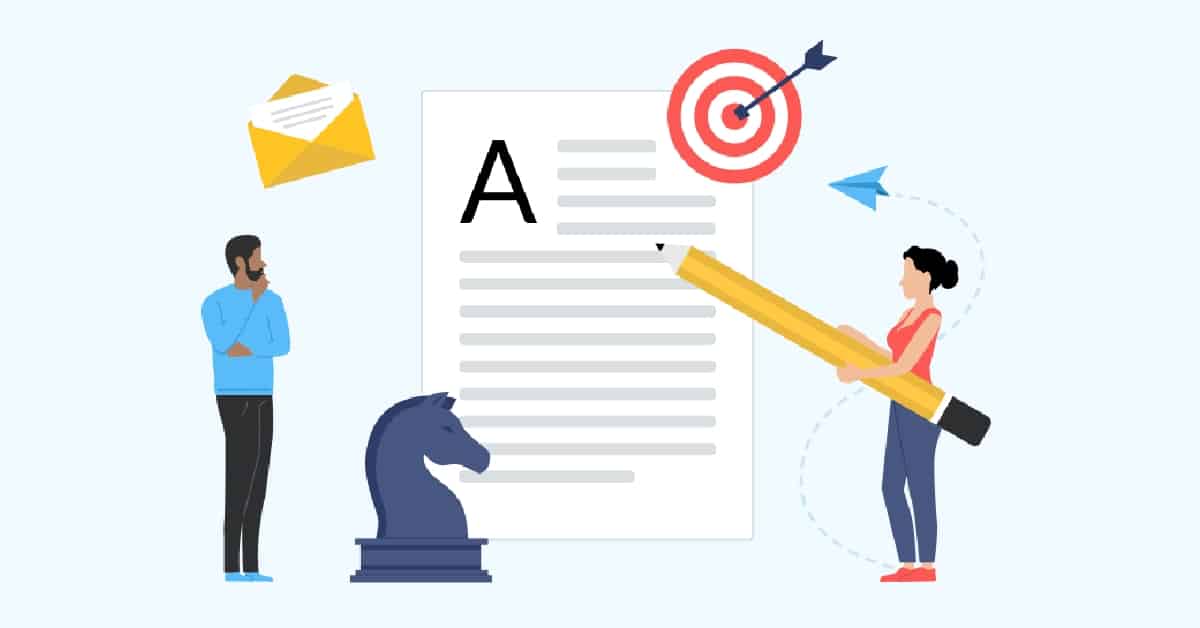Creating a content strategy for an ecommerce site can be a daunting task, but it doesn’t have to be. By breaking it down into manageable chunks, you can develop a strategy that drives traffic, boosts conversions, and ultimately helps your business grow. In this article, we’ll cover 7 key sections to help you create a content strategy that works for your ecommerce site.
1- Define your audience:

The first step in creating a content strategy is to define your target audience. Who are they? What are their pain points? What are their goals? By understanding your audience, you’ll be able to create content that speaks to them and addresses their needs. For example, if your audience is young professionals, your content should be focused on career advice and productivity tips. Once you have a clear understanding of your audience, you can create content that will resonate with them and build trust with your brand.
Additionally, you can use different methods like surveys, google analytics, and social media listening to gather more insights of your audience, you can find out what they are searching for, what they like, and what they don’t like. This information will allow you to create a more tailored content strategy that addresses their specific needs and interests, helping to increase engagement and conversions.
Moreover, you need to determine their demographics, behaviors and psychographics, as well as their buyer persona, to gain a deeper understanding of their interests, and to identify key elements that can help to create a more relevant and effective content.
2- Identify your goals:
Once you’ve defined your audience, the next step is to identify your goals. What do you want to achieve through your content? Is it to drive traffic, boost conversions, or increase brand awareness? Having a clear set of goals will help you stay focused and on track as you develop your content strategy.
For example, if your goal is to drive traffic, you’ll want to focus on creating content that is optimized for SEO and that can be easily shared on social media. On the other hand, if your goal is to boost conversions, you’ll want to create content that is specifically designed to convert visitors into customers. such as product demos, reviews and testimonials.
Additionally, setting specific, measurable and achievable goals will help you to track the performance of your content and make data-driven decisions. To make it more specific, you can set targets such as increasing website traffic by x%, increasing the time spent on the website by y% or boosting conversions by z%. This way you’ll be able to measure the progress of your content strategy and adjust as needed to achieve your goals.
3- Analyze your competition:
It’s important to understand what your competitors are doing when it comes to content. Analyze their strategies and see what’s working for them. Look at the types of content they’re creating, the channels they’re using to distribute it, and the results they’re getting. This will give you a sense of what’s working in your industry and can help you identify areas where you can stand out.
For instance, if your competitors are primarily using Instagram to promote their products and services, and you’re not, this could be a great opportunity for you to stand out by using that channel to reach a new audience.
Also, analyzing your competition’s content can give you ideas for new types of content to create or new topics to write about. Furthermore, you can compare your competitors’ website design, navigation, and user experience to identify potential improvements you could make to your own website.
In addition, you can use tools like SEMrush or Ahrefs to analyze their backlinks, keywords, and organic search positions, and to identify gaps in your own SEO strategy to improve your website’s visibility.
4- Develop a content calendar:
With your audience, goals, and competition in mind, the next step is to develop a content calendar. A content calendar will help you plan and organize your content in advance, ensuring that you’re consistently providing valuable information to your audience. It also helps you to schedule promotions and events in advance so that you can maximize results.
Additionally, a content calendar allows you to vary your content types and topics, to ensure that your audience doesn’t get bored and to keep them engaged, this can include blog posts, videos, infographics, webinars, and more. Moreover, it allows you to plan and create content that aligns with your sales and marketing campaigns and support your overall business goals.
You can use different types of content calendars like a simple excel sheet, google calendar or specialized tools like Hootsuite, CoSchedule or Hubspot. Whatever format you choose, make sure it’s easy to use and updated regularly.
5- Create valuable content:

Once you have a content calendar in place, it’s time to start creating valuable content. This is where you’ll want to focus on providing your audience with information that is useful, interesting, and relevant to their needs. This can include blog posts, videos, infographics, and more. As you create content, be sure to optimize it for SEO to increase the chances of it being found by your target audience.
To create valuable content, you need to understand your audience’s needs, pain points, and interests. The content should be informative, educational and provide solutions to their problems. Also, it’s important to use a tone that aligns with your brand’s voice and personality, this will help to establish a strong emotional connection with your audience.
Furthermore, make sure to use visuals, images, and videos to make the content more engaging and to break up long blocks of text. Additionally, use headings, subheadings, and bullet points to make the content easy to scan and understand.
6- Promote your content:
Creating valuable content is only half the battle. The next step is to promote it. There are many ways to do this, including social media, email marketing, and paid advertising. The key is to find the channels that work best for your business and to consistently promote your content on them.
For example, if you find that your target audience is most active on Instagram, you’ll want to focus your promotion efforts there. Additionally, you can also use paid advertising to boost visibility and drive traffic to your site.
Additionally, you can use email marketing to notify your subscribers about your new content and to keep them engaged with your brand. However, make sure to segment your audience based on their preferences and interests and to send them relevant and targeted content.
7- Measure and Optimize:
Finally, it’s important to measure and optimize your content strategy. Use analytics to track the performance of your content, and use this data to make informed decisions about what to do next. It’s also important to test different elements of your strategy to see what works best, and to continually make adjustments as needed.
You can use tools like Google Analytics, Omniture, or Mixpanel to track metrics such as website traffic, bounce rate, conversion rate, and engagement. This data will help you understand which types of content are resonating with your audience and which are not, and make adjustments accordingly.
For example, if you find that a particular blog post is generating a lot of traffic and engagement, you can create similar content in the future. On the other hand, if you find that a certain type of content is not performing well, you may want to consider discontinuing it or finding a way to improve it.
Additionally, it’s important to test different elements of your content strategy to see what works best. For example, you can test different headlines, images, or calls to action to see which ones are most effective at driving conversions. You can also test different promotion channels to see which ones are driving the most traffic and engagement.
Furthermore, it’s essential to measure the performance of your key performance indicators (KPIs) such as traffic, conversions, bounce rate, and engagement, to identify areas of improvement. Also, it’s important to use these metrics to determine the ROI of your content strategy and to justify your budget and resources allocatio.
In summary, creating a content strategy for an ecommerce site takes time, effort, and planning, but by following these 7 key sections, you can develop a strategy that drives traffic, boosts conversions, and ultimately helps your business grow. By defining your audience, identifying your goals, analyzing your competition, developing a content calendar, creating valuable content, promoting it and measuring and optimizing your results, you can build trust, establish your brand as a credible resource, and ultimately help your business grow.
Related articles To Content Strategy:
 Salma combines her love for visual design with her passion for digital marketing to create stunning, effective campaigns. She enjoys experimenting with different design tools and platforms to find the perfect balance between aesthetics and functionality. Salma's creative flair and dedication to continuous learning make her an asset to our innovative team.
Salma combines her love for visual design with her passion for digital marketing to create stunning, effective campaigns. She enjoys experimenting with different design tools and platforms to find the perfect balance between aesthetics and functionality. Salma's creative flair and dedication to continuous learning make her an asset to our innovative team.












